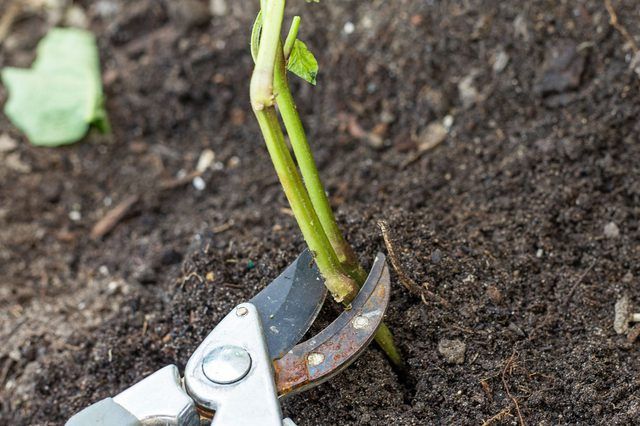Bulbs
Flower Basics
Flower Beds & Specialty Gardens
Flower Garden
Garden Furniture
Garden Gnomes
Garden Seeds
Garden Sheds
Garden Statues
Garden Tools & Supplies
Gardening Basics
Green & Organic
Groundcovers & Vines
Growing Annuals
Growing Basil
Growing Beans
Growing Berries
Growing Blueberries
Growing Cactus
Growing Corn
Growing Cotton
Growing Edibles
Growing Flowers
Growing Garlic
Growing Grapes
Growing Grass
Growing Herbs
Growing Jasmine
Growing Mint
Growing Mushrooms
Orchids
Growing Peanuts
Growing Perennials
Growing Plants
Growing Rosemary
Growing Roses
Growing Strawberries
Growing Sunflowers
Growing Thyme
Growing Tomatoes
Growing Tulips
Growing Vegetables
Herb Basics
Herb Garden
Indoor Growing
Landscaping Basics
Landscaping Patios
Landscaping Plants
Landscaping Shrubs
Landscaping Trees
Landscaping Walks & Pathways
Lawn Basics
Lawn Maintenance
Lawn Mowers
Lawn Ornaments
Lawn Planting
Lawn Tools
Outdoor Growing
Overall Landscape Planning
Pests, Weeds & Problems
Plant Basics
Rock Garden
Rose Garden
Shrubs
Soil
Specialty Gardens
Trees
Vegetable Garden
Yard Maintenance
How to Care for a Chinese Lantern Plant
How to Care for a Chinese Lantern Plant. The papery globes of Chinese lantern (Physalis alkekengi) light up the fall garden with brilliant orange or red. The shrubby plant, perennial in U.S. Department of Agriculture plant hardiness zones 3 through 9, reaches 1 to 2 feet tall and produces white flowers followed by puffy, orange or red calyxes, or...
The papery globes of Chinese lantern (Physalis alkekengi) light up the fall garden with brilliant orange or red. The shrubby plant, perennial in U.S. Department of Agriculture plant hardiness zones 3 through 9, reaches 1 to 2 feet tall and produces white flowers followed by puffy, orange or red calyxes, or lanterns, which cover small berries. Chinese lantern seeds can be sown in place after the last spring frost, and the resulting plants will bloom the following year. Considered somewhat invasive and with few pests to curb its spread, Chinese lantern can be planted in a bed of its own for the best results.
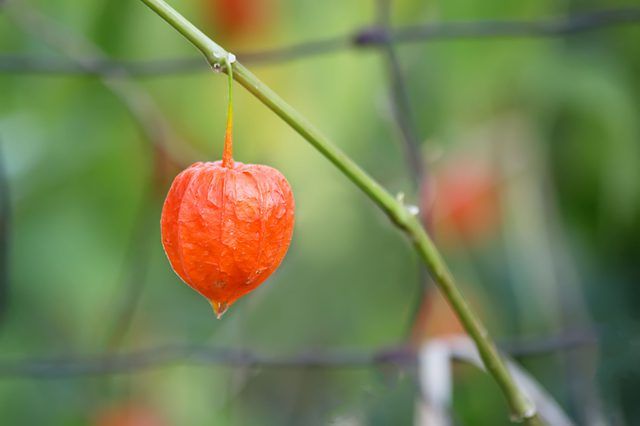
Things You'll Need
Work gloves
Shovel
10-10-10 granular fertilizer
Tape measure
Watering device
Pot or tub (optional)
Toilet paper or paper towel cardboard tube (optional)
Ready-to-use insecticidal soap spray (optional)
Pruning shears
Step 1
Relocate a Chinese lantern plant that performs poorly -- is spindly or has few flowers -- to an area of the garden that receives partial to full sun. A southern exposure that receives no more than eight hours of sunlight each day is optimal.
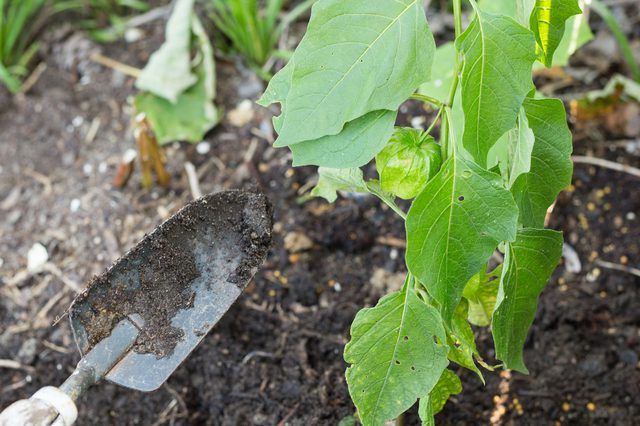
Step 2
Sprinkle 1/10 pound of 10-10-10 granular fertilizer per every 10 square feet of garden soil surface in spring and midsummer. Brush all fertilizer granules from the plant foliage, preventing fertilizer damage to the plant. Follow each fertilizer application with a deep watering. Water prevents root burn and activates the fertilizer.

Step 3
Water a new Chinese lantern whenever its top layer of soil is dry, watering enough to saturate the soil to the depth of the roots -- the top few inches of soil. An established plant needs water to the depth of its root zone every three weeks in spring and fall and every two weeks during the height of summer when water is not supplied by rainfall. Ensure the soil drains well, and avoid having standing water in a Chinese lantern bed.
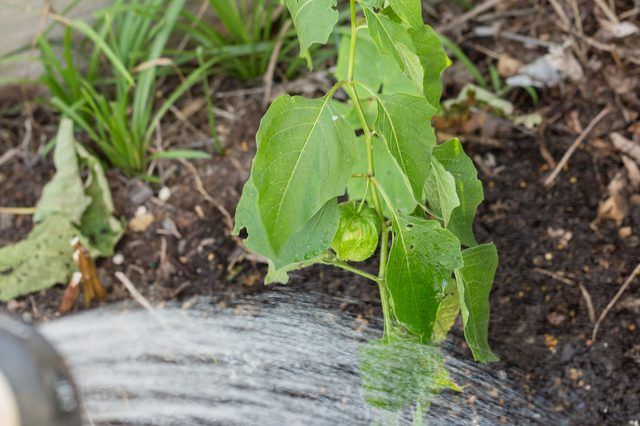
Step 4
Dig out extra Chinese lantern plants by the roots and either replant or discard the plants if they spread into areas where you don't want them. An established Chinese lantern spreads by rhizomatous roots, or underground runners, and can crowd other plants. Tidy your Chinese lantern's inground bed this way several times per year. Alternatively, plant your Chinese lantern in a pot or tub to use as a garden accent,
Spring is the best time to divide and replant a crowded Chinese lantern patch. Allow 2 to 3 feet between plants. Mix the spring dose of fertilizer -- 1/10 pound of 10-10-10 per 10 square feet -- with the soil when the plants are out of the ground, and water the soil. Water replanted plants at least once each week until they become re-established.
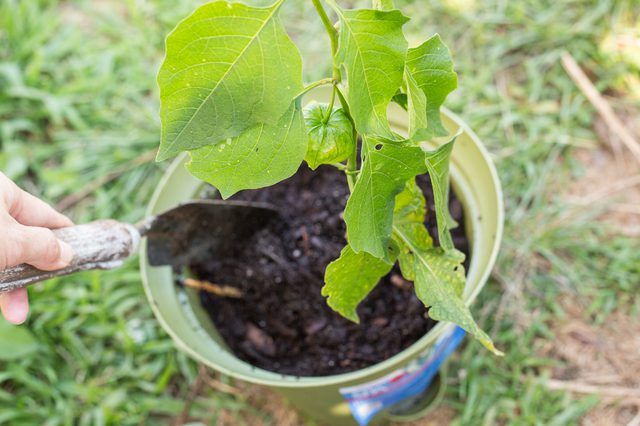
Step 5
Monitor a new Chinese lantern plant for cutworms -- small caterpillars that chew off a seedling at its base. Handpick and remove the worms, or place a short section of toilet paper or paper towel cardboard tube around the plant's base as a protective collar. Pesticides are not recommended against cutworms on ornamental plants.

Step 6
Check the leaves of an established Chinese lantern plant for tiny holes caused by their main pest -- flea beetles -- in spring and early summer. The tiny black or brown beetles die off by midsummer. Don work gloves, and apply a ready-to-use insecticidal soap spray to the front and back of flea beetle-infested leaves and to the plant's stems until they are thoroughly wet. Apply the insecticidal soap early in the day when pests are active, wind is calm and the temperature is below 90 degrees Fahrenheit. Reapply the insecticidal soap every one to two days as long as you see flea beetle activity.
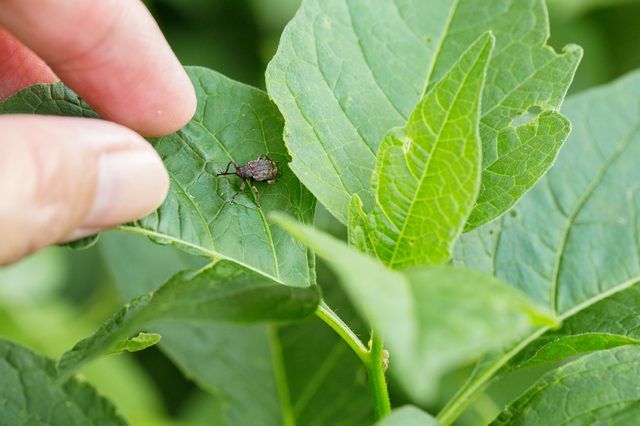
Step 7
Cut the plant to ground level with pruning shears in late fall. Doing so prevents it from self-sowing. Disinfect pruning blades by wiping them with alcohol and allowing them to dry before pruning. This eliminates the possibility of disease being spread to the plant from infected blades.
